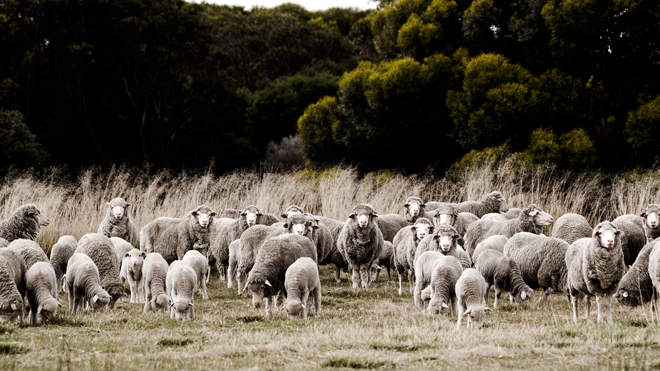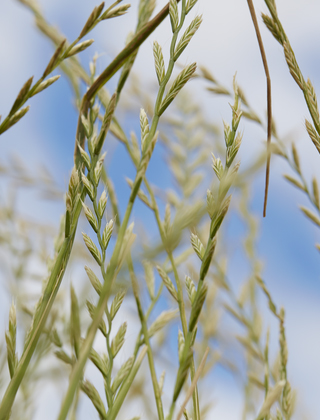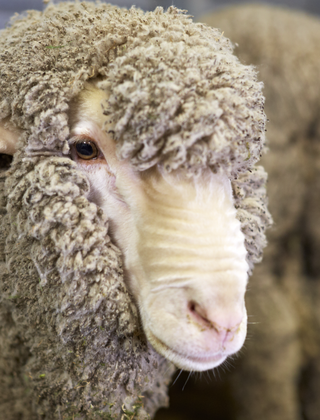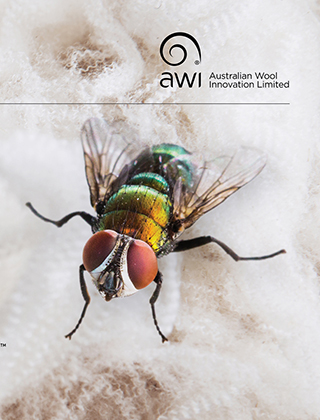Optimising Merino ewe survival at lambing

To help optimise Merino ewe survival around the time leading up to and after lambing (the periparturient period), a new AWI co-funded project is investigating the pattern of Merino ewe periparturient mortality on-farm and will trial practical intervention strategies to reduce it.
The four-year project funded by AWI and MLA involves a team of researchers, veterinarians and consultants working with Merino producers across key Australian wool-producing regions to get to the bottom of Merino ewe mortality and develop best practice management extension material to help producers optimise their ewes’ survival.
“With ewes representing the most productive unit in a flock, and Merino ewes making up about two-thirds of Australia’s breeding ewe flock, it is important for the Australian sheep and wool industry to optimise the health and survival of these ewes,” said AWI General Manager, Research, Bridget Peachey.
“Although we know that ewe losses tend to occur mainly during and around lambing, we want to get a better handle on the incidence and causes of many of these losses in Merino ewes specifically, and develop cost-effective and practical intervention strategies to increase ewe survival rates.
“The research results from the new project will inform revised best practice management that will be made widely available to help adoption by Merino sheep and wool producers.”
The new project builds on a recent study that assessed the causes and rates of ewe mortality during the lambing period across commercial maternal flocks.
A review of available Australian literature indicated a range in mortality rates of 2–10% in Merino ewe flocks. However, the method by which mortality is determined could influence that variability. Mortality can, for example, be confirmed by counting carcasses, or be assumed from the difference in numbers between yardings. Without a carcass, the cause of death is harder to determine with certainty.
Causes of Merino ewe mortality
Generally, the cause of death is divided into three categories: those occurring before, during or after lambing. A fourth category can be considered – the deaths that occur around the lambing period not directly caused by pregnancy or lambing, but to which ewes can be more susceptible during this time.
Common causes of death before lambing include pregnancy toxaemia, hypocalcaemia, and vaginal prolapse, if followed by complications such as infection or rupture of the vaginal wall. Risk factors include age and litter size, with older ewes or those carrying multiples being at greater risk.
A prolonged or difficult birth (known as dystocia) is a significant cause of Merino ewe death during lambing. Dystocia can be due to the lamb’s position (such as head back or leg back), or the ewe’s physiology (for example a small pelvis). There are many maternal related causes, but the most common in sheep are that the uterus cannot contract and expel the lamb correctly (due to for example hypocalcaemia, or interrupted lambing), or the lamb being too big for the birth canal. Dystocia can lead to death from birthing trauma, which may include haemorrhage or infection. Risk factors for dystocia include ewe age, body condition score, litter size, and lamb birth weight.
Death after lambing can often occur due to reproductive tract infections, or mastitis.
Some studies indicate that only about 10% of ewe deaths are investigated by a vet. However, the cause of death can’t always be determined by just looking at a carcass. The MLA-funded study Unlocking the keys to ewe survival used veterinary post-mortems as well as farm diaries to collect the producer’s observations.
This study found that only two-thirds of cases of dystocia (which was a major cause of deaths in these ewes) could be diagnosed by looking at the ewes externally. A post-mortem was needed for a significant number of these cases to be identified as dystocia being the cause of death. However, a post-mortem does not guarantee a diagnosis – one study showed that a cause of death could not be found in up to 20% of mortalities.
Research results to inform best practice
The new project, undertaken by agricultural consulting firm Pinion Advisory, will work closely with at least 42 commercial Merino businesses across WA, SA, Victoria and NSW during lambing to investigate ewe mortality incidence and causes on-farm.
Both producer-kept farm diaries and veterinary-conducted post-mortems will be used to collect data on Merino ewe mortality to determine the pattern of periparturient mortality across farms. This data, together with the recently conducted industry-wide survey on Merino ewe mortality, will inform practical intervention strategies that will be trialled on-farm during the 2025 lambing season.
The final phase of the project will quantify the economic impacts of Merino ewe mortality and intervention strategies at farm and industry levels.
Research findings will leverage existing sheep extension programs to catalyse industry adoption of best practice management beyond the lifetime of the project.
More information: Esmée de Looff, edelooff@pinionadvisory.com
Project host producers: Pip Goldsmith and Ben Keen, Coonamble, NSW
Pip Goldsmith and Ben Keen run 2,500 Merino ewes as part of the family’s business at Coonamble on the central-western plains north of Dubbo, NSW.
They are one of the host producer sites on the Merino ewe mortality project, working with Dr Jillian Kelly of Animal Health & Nutrition Consulting at Coonamble.
“My husband Ben Keen and I are in business with my parents, Steve and Babs Goldsmith. We’ve increased the landholding since Ben and I joined the business 10 years ago to about 4,600 hectares. We run 2,500 Merino ewes and 60 Dorset rams to breed first cross lambs. Additionally, we have broadacre crops across about 1,600 hectares and trade cattle opportunistically,” Pip said.
“We like Merinos that are bred in western NSW or Queensland due to their size, shape and tolerance for our often hot, dry climate. Our Merinos each cut about 5kg of 19 micron wool. The Merino offers a quality lamb as well as income from fleece. We produce a crossbred lamb that we will finish on pasture or grain as the season dictates.”
Benefits of participation in the project
Pip says farming Merinos in north west NSW has its own particular set of challenges so she appreciates the region being included in the Merino ewe mortality research project.
“We are more variable in our climate, graze a lot more extensively, often on native pastures, and our management during lambing is impacted by distance and environment. It is important that all aspects of running Merinos are represented in this study and we are excited to be included,” Pip said.
“I’ve enjoyed being involved in the project and found great value in having Jill as an active part of our family’s business and sheep management program. Participating in the project has also facilitated conversations with other local producers that probably wouldn’t have otherwise been had.
“While our involvement in the project will contribute to improved productivity in our own enterprise, it is also rewarding to know that the project will be used to provide evidence for best practice that will benefit the whole industry.
“We hope the information helps producers know what is ‘normal, expected or likely’ in terms of ewe mortality and helps them hone in what they can do to reduce it.”
Management and record keeping
Pip says she is proactive with the management of her family’s own ewes, working with Dr Kelly to prepare them for joining and then lambing.
“Animal husbandry has always been one of our core values and something we’ve always prioritised highly for the success of our business. We look at the condition of the sheep, the pasture, and supplementary feed when necessary. We also scan for pregnancy and manipulate stocking rate to improve lamb and ewe survival,” Pip said.
“We pay particular attention to internal and external parasite management around the time of lambing so there are no unwanted surprises that might impact ewe health.”
As part of the project, Pip says any deaths and other observations were documented in a more timely way than would normally have been the case, which proved valuable.
“We filled in a lambing diary which made us look at each individual ewe closely. We also had to measure pasture quantity and quality which is extremely beneficial when preparing ewes for lambing,” she said.
“An important part of the project was that Jill did post-mortems on any dead ewes we found and it was revealing to see the causes of mortality. It was far more in-depth than we would have done without the project.
“There are some challenges in having different people in the business being involved in record keeping so it’s really important for clear communication so that the data we end up with can really tell a story.
“It’s one thing to be given a message about what best practice is, but if you see a trend or marker in your own management, it gives you such great confidence in decision making and future management of the enterprise.”
This article appeared in the December 2024 edition of AWI’s Beyond the Bale magazine. Reproduction of the article is encouraged.















